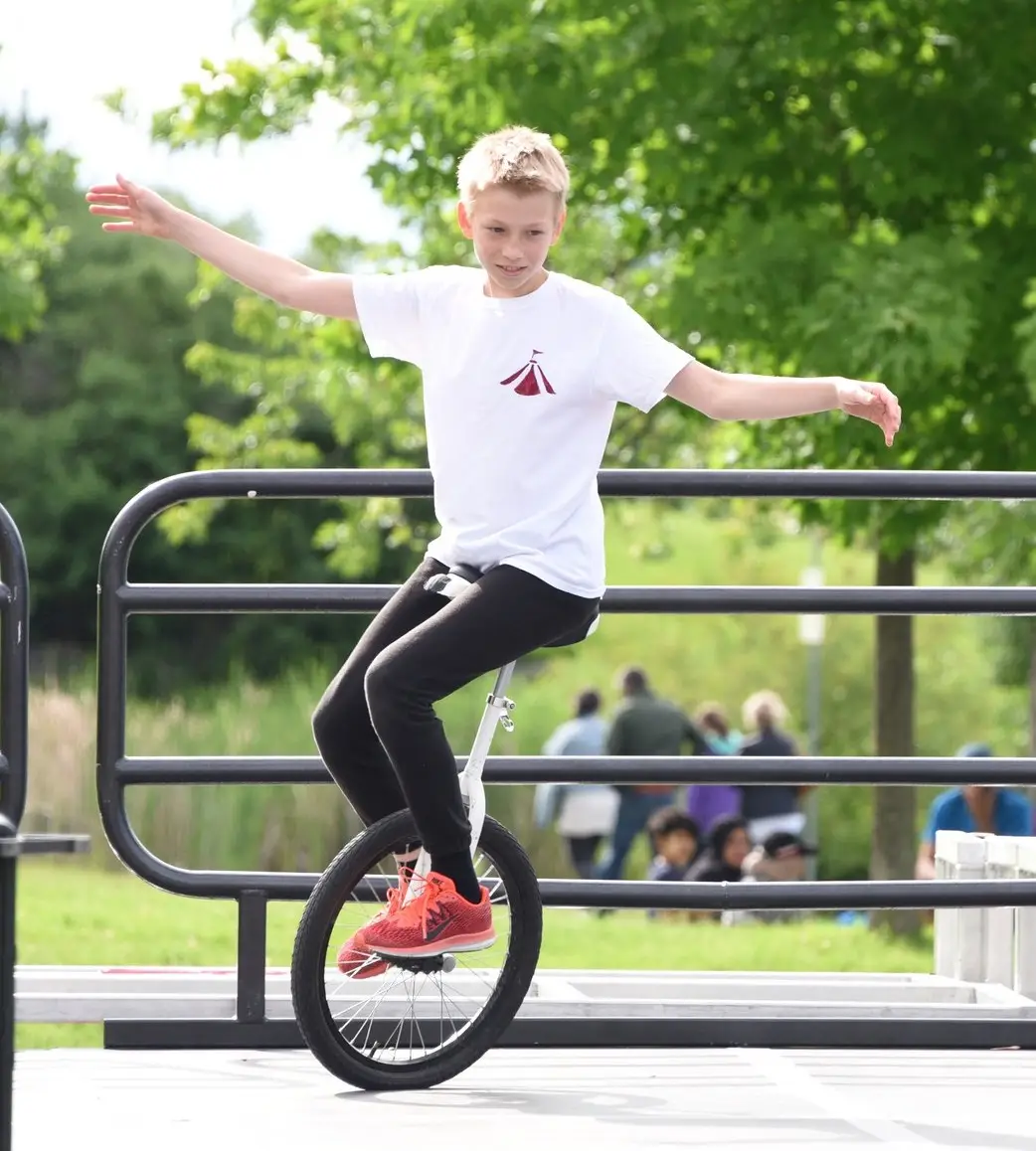A monocycle, or unicycle, is a bicycle with only one wheel. It has no chain and no handlebars. The pedals rotate directly around the axis of the wheel, and you have to turn by moving your feet.
Learning to ride a monocycle is more difficult than on a simple bicycle, but the result is worth it: the process of learning develops a sense of balance, and your new skill will attract the attention of others.
The history of the appearance of the monocycle
There are several theories about the appearance of the monocycle. The unicycle, the most famous one, appeared at the end of the XIX century.
All of us at least once saw in pictures a strange bicycle with a big front wheel and a small rear one—it was a penny-farthing. It was he who became the ancestor of the monocycle.
Learning unicycle, monocycle techniques for kids and adults has never been so easy! Capital Circus in Ottawa is presenting unicycle and monocycle classes! Sign up and learn great skills and perform in front of an audience or surprize your loved ones, friends, and colleagues.
When riding a penny-farthing, most of the body weight was on the front wheel, because of which the rear wheel was thrown up very strongly on the bumps. The cyclist had to keep his balance in order not to fall until the rear wheel was back on the ground.
Later, people realized that, with proper skill, the rear wheel was useless. They decided to remove it together with the steering wheel. That’s how the first monocycles appeared.
The wheel diameter was large, so riding a monocycle required skill. Dexterous circus performers took advantage of this and quickly transformed riding a monocycle into a circus performance.
Over time, the appearance of the monocycle changed, with smaller diameter wheels being used, and the number of skilled people who were able to conquer this technological marvel grew.
How to learn how to ride a monocycle
To learn how to ride a monocycle, it is enough to spend a few days and to have some support—at the beginning, it will be very useful. Those who are already able to keep their balance without leaning on the handlebars of an ordinary two-wheel transport have the easiest time. It is better to start with the simplest one.
Seating and balance
These skills are best practiced indoors or outdoors, but with support. The centre of gravity should be shifted to the hips, and the gaze should be directed straight ahead. You caught the balance with support. You need to start trying to do it without it. When the novice rider can stay in the saddle for more than a minute on his own, you can progress to more complex actions.
Moving in a straight line. To make the monocycle go, you need to make some effort—to tilt the body forward, shifting the centre of gravity, and smoothly begin to twist the pedals. Braking or reducing speed is achieved by straightening your back or leaning your body backwards.
Experienced riders do not recommend bending while riding – arched position of the spine can lead to the athlete simply flying out of the saddle. At first, keep your balance and speed low; swinging your arms is definitely not necessary.
Maneuvering and turning.
Bare rudder monocycles can be directed in the right direction with the help of weight transfer to one of the hips. A slight deviation of the body-and the unicycle will easily go in a given direction. At first, you should try maneuvering with the maximum radius, just like on a regular bike. Then you can gradually try to reduce it.
Acceleration
This is the final stage of training, allowing you to develop confidence in controlling the vehicle. But even here, it is important to remember that the speed mode should allow the rider to jump forward out of the saddle if necessary without risk of injury.
